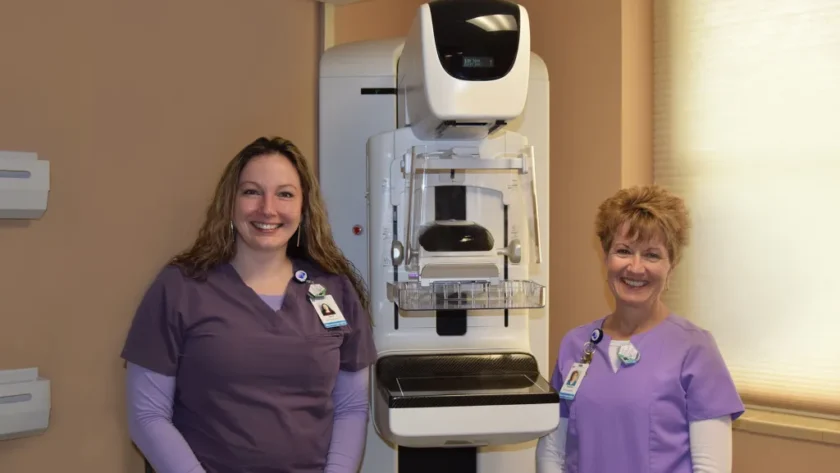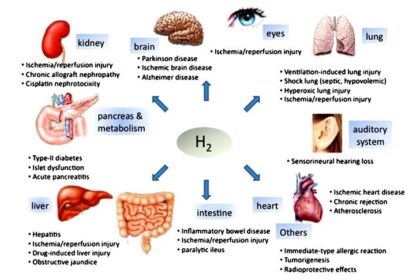Cancer is the #2 cause of death in the United Satates so prevention is important. Living a healthy lifestyle with plenty of nutrition, rest, exercise and a well-rounded emotional and mental state are important also. Prevention is key if you truly desire to avoid these diseases all together.
Early detection is also useful. Early detection could mean the difference between life and death. When it comes to breast cancer approximately 67.5% of women 40 years and older get mammograms but this is not the best approach for your health and to detect breast cancer early. It also doesn’t give you as much insight as you’d think.
The Downsides of Mammograms For Breast Cancer Detection
Mammograms, long hailed as a cornerstone in breast cancer detection, have undeniably contributed to early diagnosis and improved survival rates. However, amidst their benefits lie several downsides that often go unacknowledged. From false positives leading to unnecessary procedures to concerns about ionizing radiation, the landscape of mammography is more nuanced than commonly portrayed.
False Positives and Unnecessary Biopsies
One of the most significant drawbacks of mammograms is their tendency to produce false positive results. Studies have shown that false positives occur in about 10% of screening mammograms, causing undue anxiety and stress for patients who are subsequently subjected to further tests and procedures, including biopsies. According to the American Cancer Society, about 60-70% of breast biopsies in the United States turn out to be benign, indicating a substantial rate of unnecessary interventions triggered by false positives. That’s a very high rate. This induces quite a bit of trauma an pain on your body.
These unnecessary biopsies not only impose emotional stress on individuals but also contribute to healthcare costs and resource utilization. Moreover, the fear and anxiety associated with false positives can deter women from participating in future screenings, potentially delaying the detection of actual breast cancers.
Ionizing Radiation and Cancer Risks
Another concern surrounding mammograms is the use of ionizing radiation during the imaging process. While the radiation exposure from a single mammogram is relatively low, repeated exposures over time can accumulate and pose potential risks. Ionizing radiation is a known carcinogen, capable of damaging DNA and increasing the risk of cancer development, albeit at a low level.
Critics argue that the use of ionizing radiation in mammography may paradoxically contribute to cancer growth and support metastases in susceptible individuals. The concern arises from the fact that radiation exposure, while targeting cancerous cells, can also affect surrounding healthy tissue, potentially triggering genetic mutations that promote malignancy.
Do Mammograms Promote Cancer Cell Growth?
There have been discussions within the medical community that mammograms actually promote cancer cell growth, also known as metastases. This is because the ionizing radiation irritates these cells and damages DNA. This disruption can cause unregulated and unhealthy cancer cells to continue to grow further. This is debatable and different people within the medical community have a different perspective on this. But if it is true, it’s definitely not worth the risk.

What is a Better Option For Early Detection?
In the realm of cancer detection, advancements in technology continue to reshape traditional paradigms, offering new avenues for early diagnosis and intervention. One such innovative method gaining attention is thermography, a non-invasive imaging technique that holds promise in detecting abnormal cellular activity even before the formation of visible tumors. Let’s explore how thermography differs from mammography, its emphasis on inflammation and vascular activity, and its potential as a complementary tool in cancer screening.
Beyond Tumor Formation: Detecting Cellular Changes
Unlike conventional imaging methods such as mammography, which primarily detect structural abnormalities like tumors, thermography focuses on detecting physiological changes in tissue temperature. Cancer cells exhibit increased metabolic activity, leading to elevated heat production and altered blood flow even before the formation of a detectable tumor mass. Thermography leverages infrared technology to capture these subtle temperature variations, offering a unique perspective on cellular health.
Radiation-Free Imaging: A Safer Alternative
One of the key advantages of thermography over mammography is its lack of ionizing radiation. While mammograms use X-rays to visualize breast tissue, exposing patients to low levels of radiation, thermography relies on thermal imaging, which is radiation-free. This aspect is particularly important for individuals who may require repeated screenings or those with concerns about radiation exposure, such as younger women or those with genetic predispositions to cancer.
Spotlight on Inflammation and Vascular Activity
Thermography goes beyond detecting localized tumors; it also provides insights into broader physiological processes such as inflammation and vascular activity. Inflammation is increasingly recognized as a hallmark of cancer development and progression. By detecting areas of increased heat or abnormal blood flow patterns, thermography can highlight areas of concern for further investigation, potentially capturing early signs of malignancy before traditional imaging methods.
It’s clear to me that thermography is a much better early detection option than Mammograms.
Recommended Reading:





